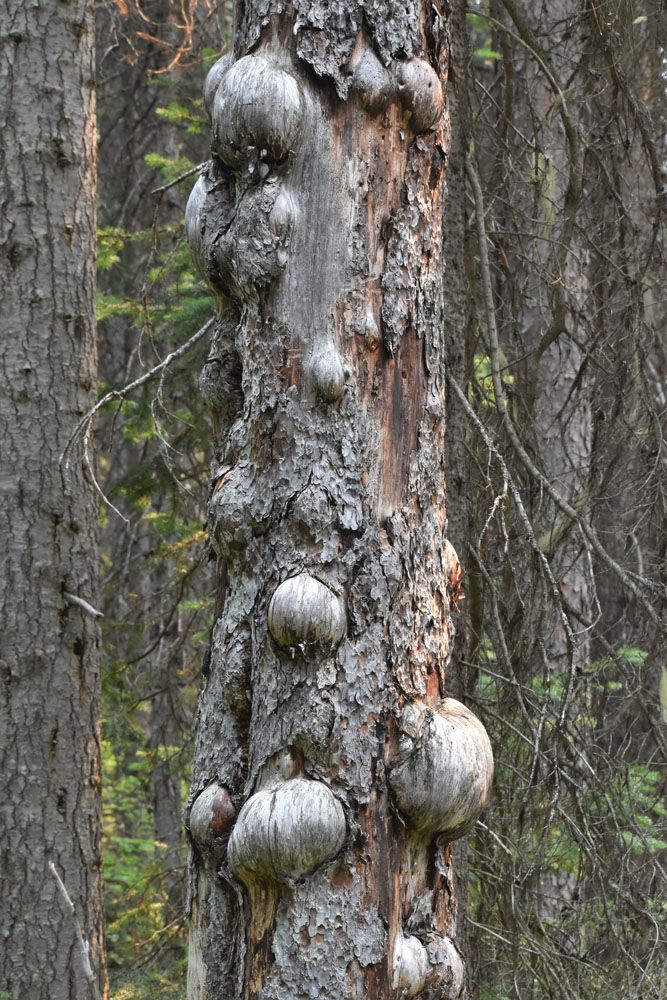
Galls or Growths on Leaves, Branches or Trunks
Galls or growths on leaves, branches, or trunks
Galls are abnormal growths that appear on the leaves, twigs, or branches of plants. They might be small lumps or complex formations, brown or brilliantly colored. Gall producers include about 1500 different species, the most majority of which are insects and mites. Some galls develop in areas where insects or mites feed or deposit eggs. They occur as a consequence of fungi, bacteria, or viruses entering the body. Galls on leaves are rarely if ever, a major issue. Galls that harm twigs, such as gouty oak gall and horned oak gall, can be more severe.
What Does Leaf Gall Look Like?
A hump, peak, or scabby region of plant flesh is often recognized as the appearance. They are solid to the touch and can be found single or in pairs, heavily covering a plant. Plant leaf galls may be green and matches the plant material. They can also be bright pink or red and look like big pimples. The appearance of several galls has given rise to their names. To mention a few, there are blister, bud, nipple, pouch, and roly-poly galls. Other galls, such as oak tree galls, are named after the plant that is afflicted. Other galls are named after the region in which they occur. These are galls on the bud, flower, leaf, twig, and root. Galls aren’t always harmful to your plants, but they can detract from the appearance of prized and beautiful species. It is critical to understand how to treat leaf gall in these situations.
Causes for leaf galls on plants:
Leaf galls on plants are generally caused by mites and other sucking insects that live beneath the plant tissue. Some galls are caused by their feeding activities, whereas chemicals produced during egg development in saliva or excretions may induce alterations in plant tissue. These modifications may not be restricted to bumps on the leaves. These tissue alterations can occur in flowers, fruits, and even roots. Leaf galls are occasionally observed on stems and trunks. Fungal and bacterial infections are two more causes of galls.
Life Cycle:
Galls form due to an interaction between the test organism’s chemical stimuli and the plant’s hormones. These pest organisms are experts at convincing the host plant to give food and shelter to the larvae that live within. The gall’s walls are physically robust, high in protein, and offer protection and nourishment to the larvae inside. A specific gall producer may frequently be recognized by the unique color, shape, and composition of the gall that forms around it or by the host plant on which it grows. Most gall-causing insects in our region have just one reproduction per year, rendering control after symptoms emerge to be of little or no use. Many gall growers have not been thoroughly researched, and their life cycles are unknown. In the absence of such fundamental knowledge, few control methods exist. Because most galls cause mainly aesthetic defects, economic incentives for financing more research are limited.
Damage Caused by Grown Gall:
Galls obstruct the passage of water and nutrients within the plant, resulting in nutritional insufficiency and reduced plant growth. Plants with a severe crown gall infection have yellowed and smaller leaves than healthy plants. Plant mortality from crown gall happens only when young plants are coated with galls or when a gall completely girdles the trunk or stem. Mature trees can withstand a high number of galls, but they are more vulnerable to heat, drought, winter damage, and secondary infections that can enter through the gall fissures.
Treatment:
While the sight of plant galls on your beloved tree may be alarming, chemical treatment for their management is seldom recommended. Consider the following suggestions:
- Consider a little infestation. Although unsightly, galls are unlikely to damage your tree, and natural controls will generally lower the population in subsequent years.
- To mitigate the effects of these infestations, employ cultural approaches. Some fallen leaves may contain different stages of gall-producing bugs. All gall-infested leaves should be raked and destroyed. To prevent possible girdling, prune and remove branches infected with gouty oak gall and horned oak gallon small and mildly affected trees. This should be done while the galls are tiny and have just begun to form on the twigs.
- Water during dry seasons and fertilize as needed to keep your trees healthy.
- Garden wisely and with consideration for the environment. Keep in mind that chemical treatment is unlikely to control infestations. When galls are visible, the causative pest has been contained within the gall and is physically protected from chemical sprays. Attempts to manage many plant galls may cause more harm than benefit to the plant or the environment, with little effectiveness in eradicating the annoying problem on the plant.
